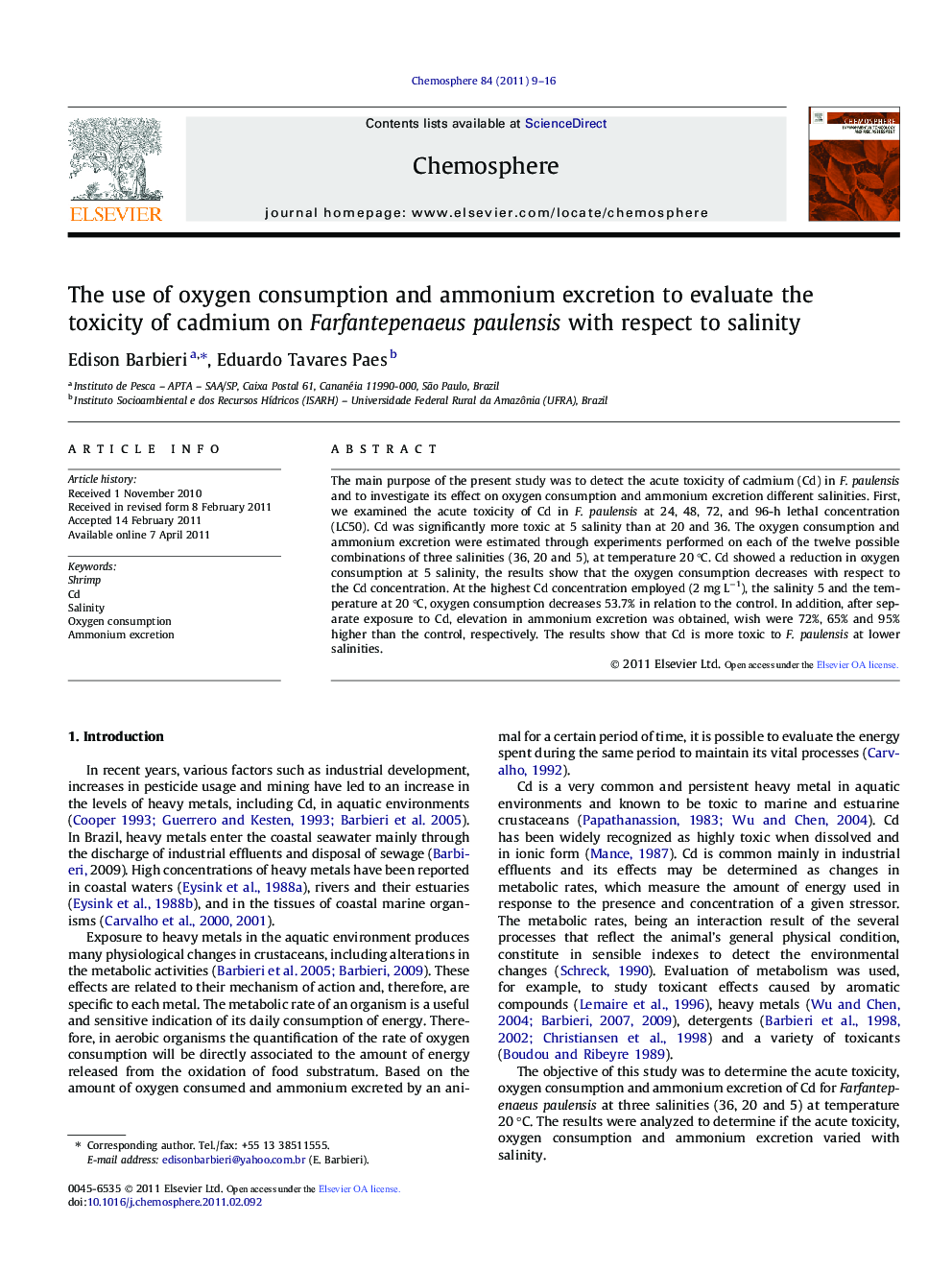| Article ID | Journal | Published Year | Pages | File Type |
|---|---|---|---|---|
| 6311754 | Chemosphere | 2011 | 8 Pages |
The main purpose of the present study was to detect the acute toxicity of cadmium (Cd) in F. paulensis and to investigate its effect on oxygen consumption and ammonium excretion different salinities. First, we examined the acute toxicity of Cd in F. paulensis at 24, 48, 72, and 96-h lethal concentration (LC50). Cd was significantly more toxic at 5 salinity than at 20 and 36. The oxygen consumption and ammonium excretion were estimated through experiments performed on each of the twelve possible combinations of three salinities (36, 20 and 5), at temperature 20 °C. Cd showed a reduction in oxygen consumption at 5 salinity, the results show that the oxygen consumption decreases with respect to the Cd concentration. At the highest Cd concentration employed (2 mg Lâ1), the salinity 5 and the temperature at 20 °C, oxygen consumption decreases 53.7% in relation to the control. In addition, after separate exposure to Cd, elevation in ammonium excretion was obtained, wish were 72%, 65% and 95% higher than the control, respectively. The results show that Cd is more toxic to F. paulensis at lower salinities.
⺠The objective of this study was to determine the acute toxicity of Cd for Farfantepenaeus paulensis. ⺠The results were analyzed to determine if the toxicity varied with salinity. ⺠The results showed that Cd was more toxic to F. paulensis at lower salinities.
